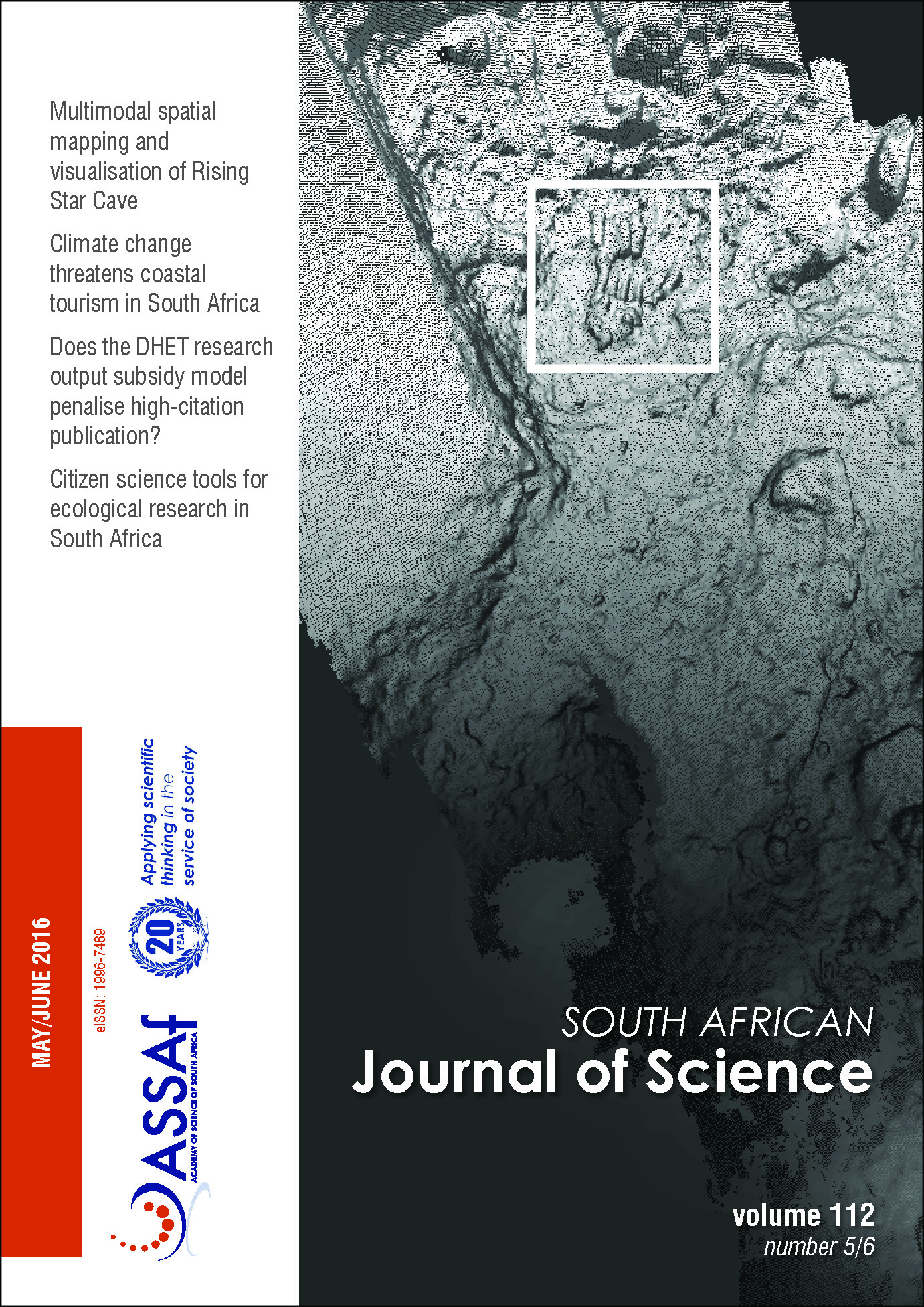A broader view of stewardship to achieve conservation and sustainability goals in South Africa
DOI:
https://doi.org/10.17159/sajs.2016/20150359Keywords:
earth stewardship, ecosystem services, natural resource management, biodiversity, eco-labelsAbstract
Stewardship is a popular term for the principles and actions aimed at improving sustainability and resilience of social-ecological systems at various scales and in different contexts. Participation in stewardship is voluntary, and is based on values of altruism and long-term benefits. At a global scale, ‘earth stewardship’ is viewed as a successor to earlier natural resource management systems. However, in South Africa, stewardship is narrowly applied to biodiversity conservation agreements on private land. Using a broader definition of stewardship, we identify all potentially related schemes that may contribute to sustainability and conservation outcomes. Stewardship schemes and actors are represented as a social network and placed in a simple typology based on objectives, mechanisms of action and operational scales. The predominant type was biodiversity stewardship programmes. The main actors were environmental non-governmental organisations participating in prominent bioregional landscape partnerships, together acting as important ‘bridging organisations’ within local stewardship networks. This bridging enables a high degree of collaboration between non-governmental and governmental bodies, especially provincial conservation agencies via mutual projects and conservation objectives. An unintended consequence may be that management accountability is relinquished or neglected by government because of inadequate implementation capacity. Other stewardship types, such as market-based and landscape initiatives, complemented primarily biodiversity ones, as part of national spatial conservation priorities. Not all schemes related to biodiversity, especially those involving common pool resources, markets and supply chains. Despite an apparent narrow biodiversity focus, there is evidence of diversification of scope to include more civic and community-level stewardship activities, in line with the earth stewardship metaphor.
Published
Issue
Section
License

This work is licensed under a Creative Commons Attribution 4.0 International License.

All articles are published under a Creative Commons Attribution 4.0 International Licence
Copyright is retained by the authors. Readers are welcome to reproduce, share and adapt the content without permission provided the source is attributed.
Disclaimer: The publisher and editors accept no responsibility for statements made by the authors
How to Cite
- Abstract 1482
- PDF 1308
- EPUB 192
- XML 224












.png)